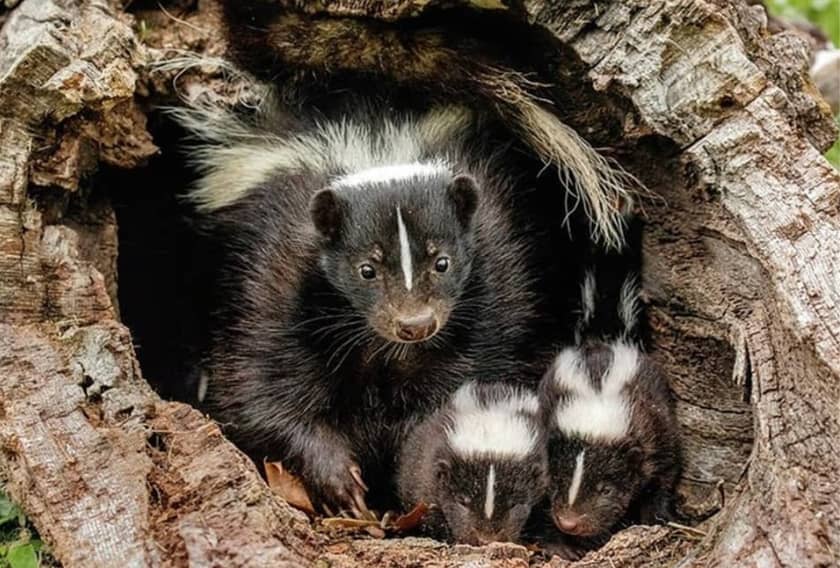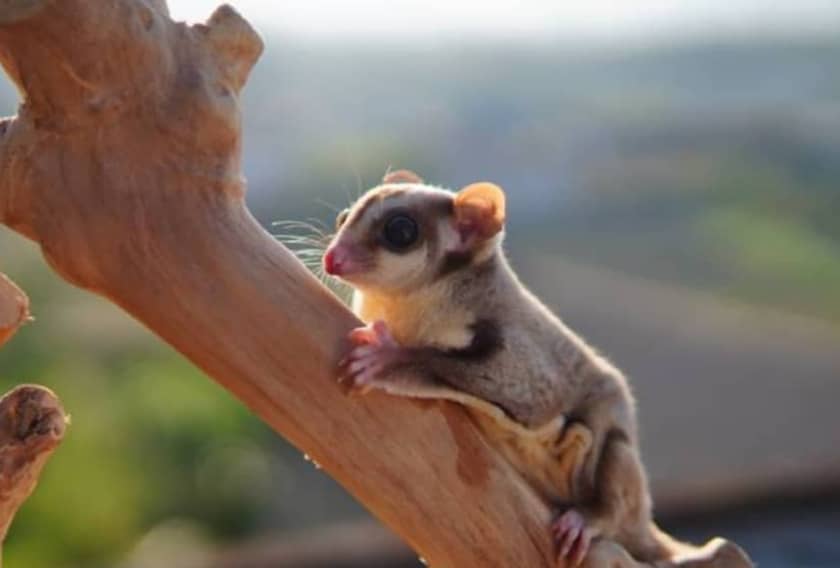Although sugar gliders are known to have sweet personalities, breeding has also gone into colors and patterns that simply make them that much more irresistible to those who enjoy the animals. While the gray Sugar Glider might be the most common, many color variations exist due to selective breeding.
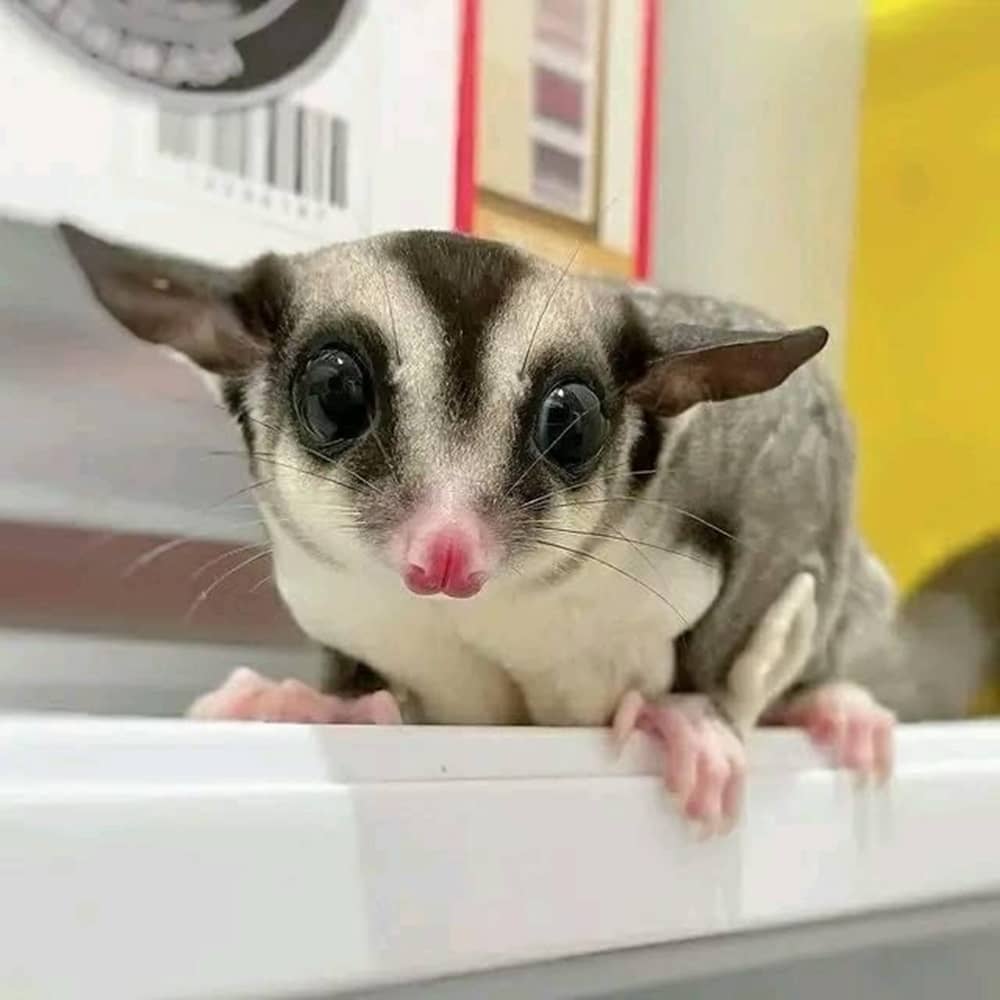
Over the past decade, breeding and keeping sugar gliders as pets has increased in popularity. They, however, are wild animals that are native to Australia. Sugar gliders may be bred in captivity by breeders to show fancy colors and patterns.
Since Sugar Gliders will cross with another type of glider, they have a dominant gene showing the typical grey color and pattern over other genes showing other colors.
Sugar Glider Color and Genetics
The color of the sugar gliders that we see can be majorly classified based on genes possessed by the sugar gliders. The parent sugar gliders have different genetics for fur color, the color of the eyes, and the pattern of markings on their bodies. These traits are due to dominant or recessive genes possessed by them.
Dominant Sugar Glider Color
To get a dominant species either both parents or at least one parent should possess that gene and physically present the color then only offspring can display that color. Some dominant species are
- Mosaic
- Black Face Black Beauty
- White Face
- True Abby Curly
Recessive Sugar Glider Color
When a particular trait is not exhibited by a sugar glider though it has a respective gene for it, it is because the gene is recessive. Both parents must possess this recessive gene( as heterozygous) means they are not displaying that trait but can produce an offspring displaying that trait.
However, if one parent is heterozygous then they will never be able to produce an offspring displaying that color. But the offspring will carry the heterozygous gene as their parents. Some of the species with recessive genes are:
- Cremino
- Leucistic
- Platinum
- Albino
- Mystery red
- Caramel Albino
- Ruby Leucistic
Others
Certain species do not fall into the category of dominant or recessive. Such species are separately classified as
- Standard Gray
- Black Beauty
- Melanistic
- Caramel
- Red tinted
Sugar Glider Color and Pattern
As a result of selective breeding, a large variety of sugar gliders with different colors and patterns are available. All these varieties of sugar gliders have attractive and eye-catching traits.
Standard Gray: The most Common Sugar Glider Color
It is the most common and naturally occurring color in the wild. Standard Gray Sugar Gliders have a gray body with a black dorsal stripe running from the head down to the tail. The dark bars extend from their ears to their eyes. The heterozygous Sugar gliders are those that carry the gene to produce the color but do not express the color themselves.
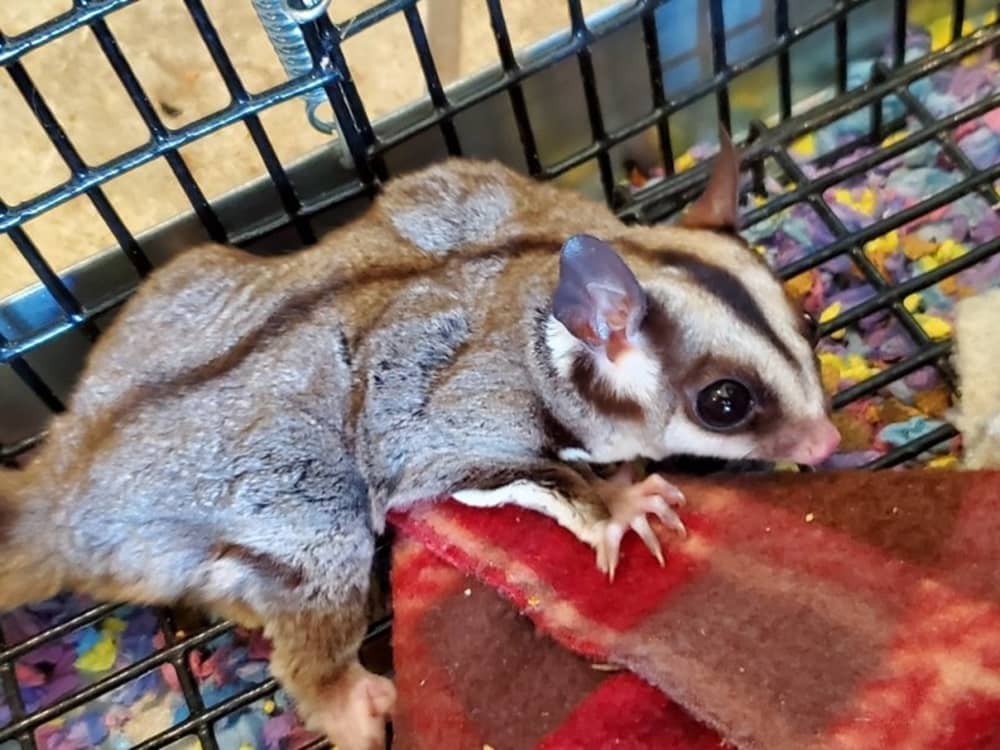
Their underbellies are usually white or cream-colored. Like all other Sugar Gliders, Standard Grays are social and playful and the color seems to not affect their behavior.
Black Beauty
This version of the Standard Gray is much darker in many of its tones but still contains the same colors and patterns. This variant is difficult to breed for and does appear to be almost random.
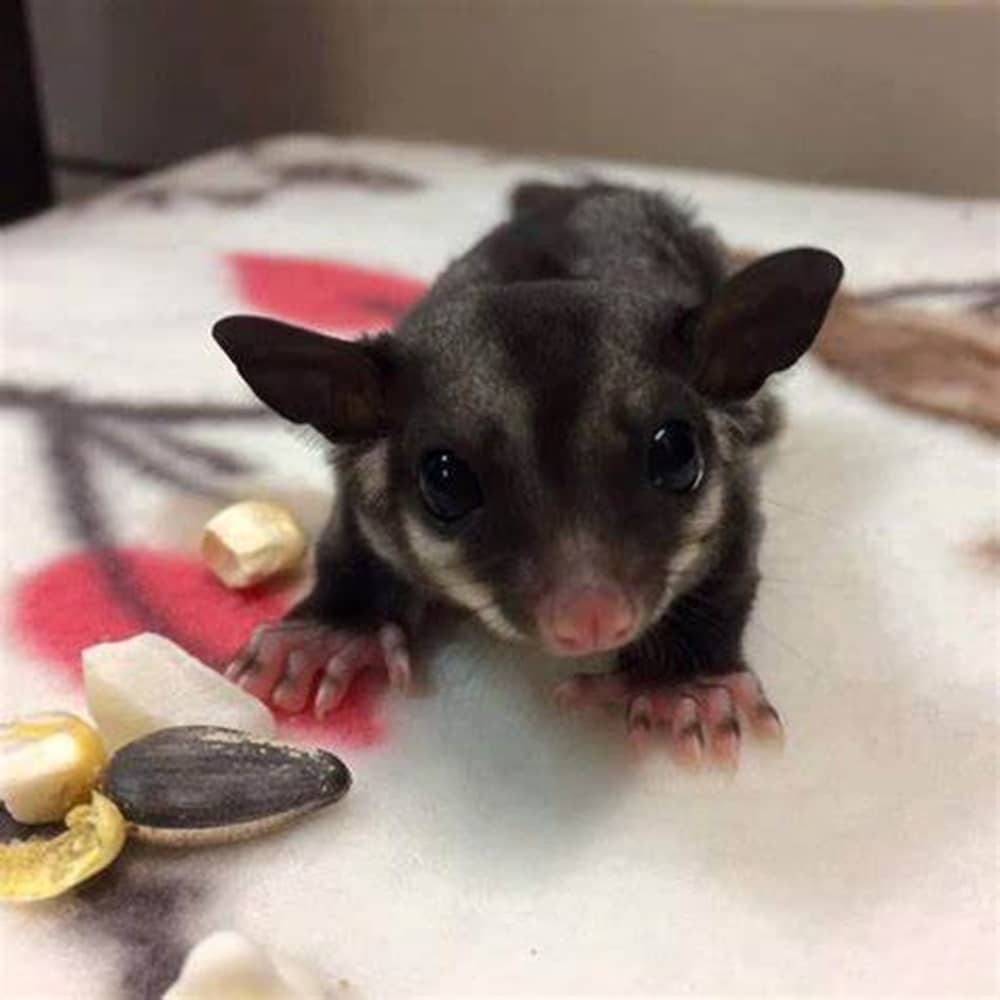
Black Beauty Sugar Gliders are overall much darker, having darker black stripes running down their backs and darkening of fur around the face and body. Others may have darker rings around the eyes called “eyeliner,” making them look quite striking.
Lion
This color variation of Standard gray has a honey or golden-colored body. Lion Sugar gliders have been named so because they have short noses and more rounded faces. Since Lion is a dominating color, it can only be reproduced by one parent who holds that color.

Cinnamon
One can identify the Cinnamon Sugar Gliders from their brownish golden body and a stripe of dark brown or copper color running on it. Due to poor diet, they may have discoloration of fur, and sometimes even their stomach turns yellowish or red.

Mosaic
Mosaic Sugar Gliders come with patterns and colors. The mosaic sugar gliders can take white, gray, or various other kinds of color markings on the body. They can have only white hands or entirely white bodies as well. No two mosaic gliders look alike. Many breeders are currently trying to breed a variety of fur patterns selectively.
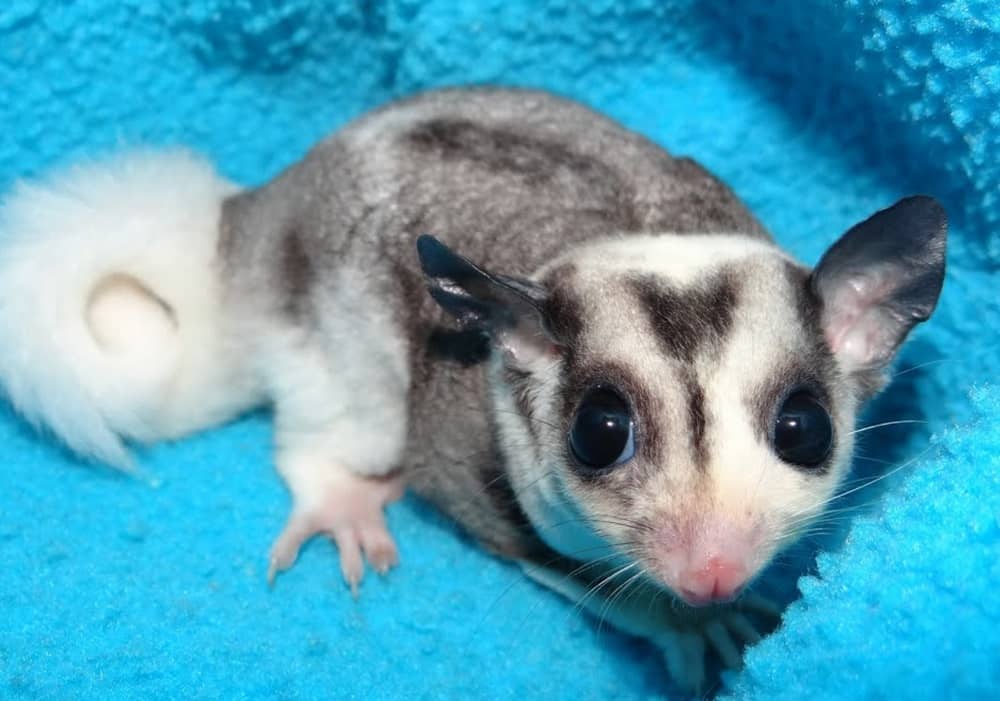
Pie Bald
The piebald or Pied animal has a pattern of unpigmented, which means white spots, on their pigmented bodies. The Piebald Sugar Gliders have huge irregular patches of white on their bodies in combination with other colors like gray or black. This mosaic pattern looks pretty random and rare to find.
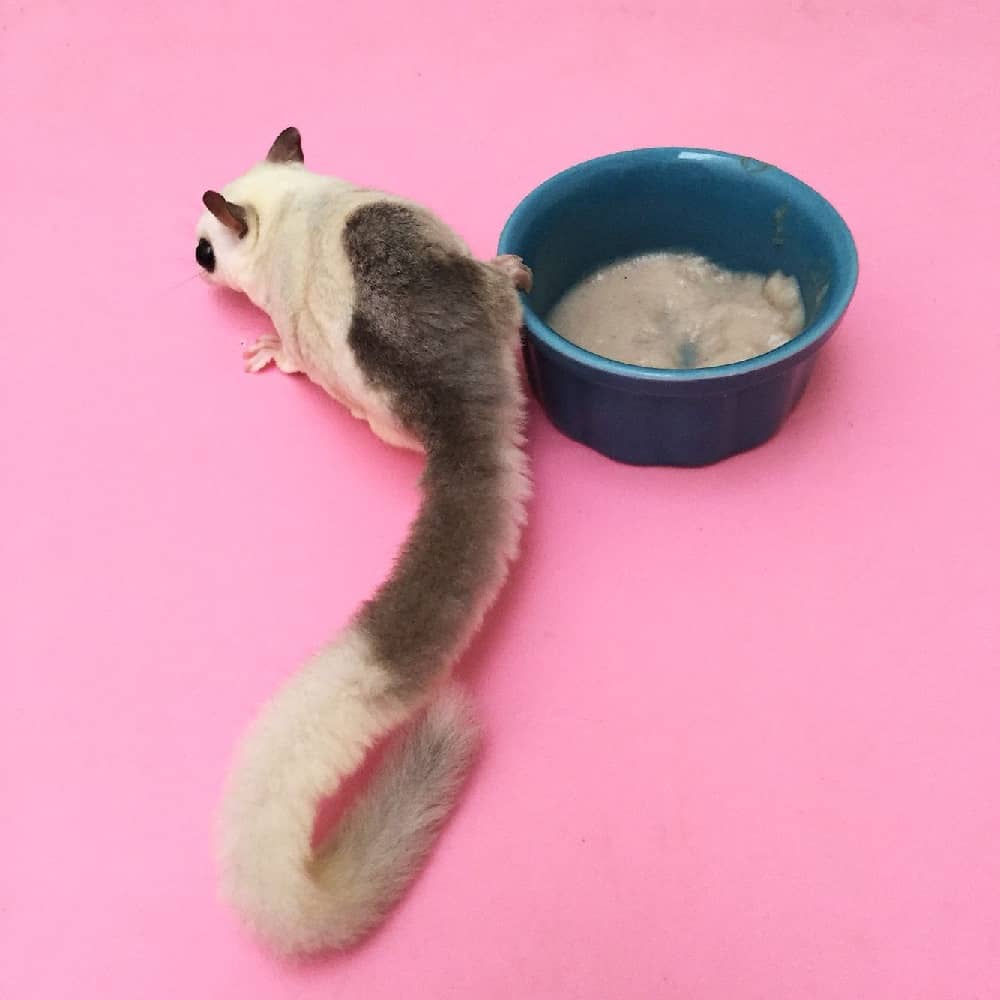
Ring Tail
They have rings of black, white, gray, or silver color alternating on their tails. Ringtail sugar glider’s different variants can have a different number of rings on their tails. The tail can have a white or black tip.
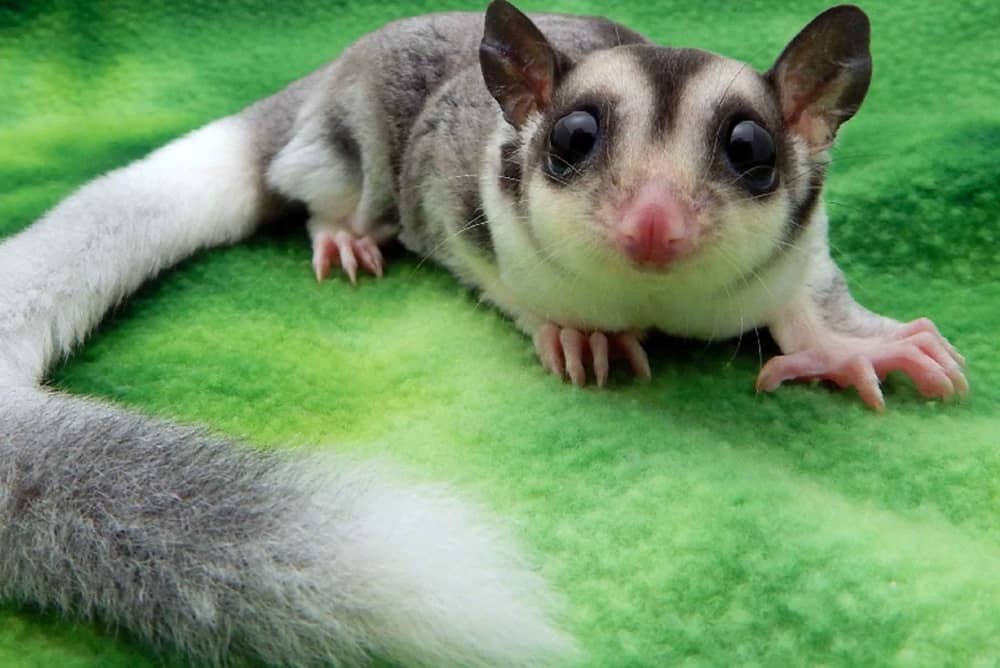
White Mosaic
Their fur color will be predominantly white, with some very unobtrusive color variations. In contrast to a leucistic, this sugar glider marking type can hold a few dark or even very light gray spots on them, mostly on their forehead or ears.
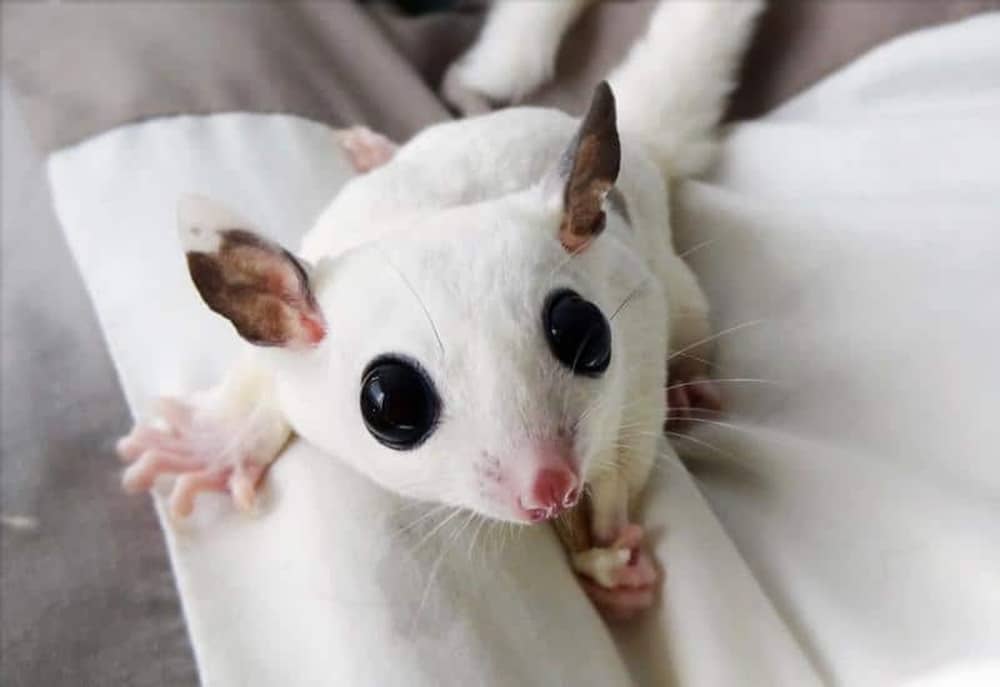
This particular type does not have leucistic genes, but they often look to have many features very much like the leucistic sugar glider. Some of them have little specks of black or gray on their ears; in fact, breeders call them “Cow Ears.”
Mahagony Red
This is a stunning illustration of Mahogany Red, one of the newest color options available. They have a very pale red tint all over. This color also comes in White Face and Mosaic variants. An albino with top coats of Mahogany Red and the light red eyes of an albino appears to be the most recent variety of this color.
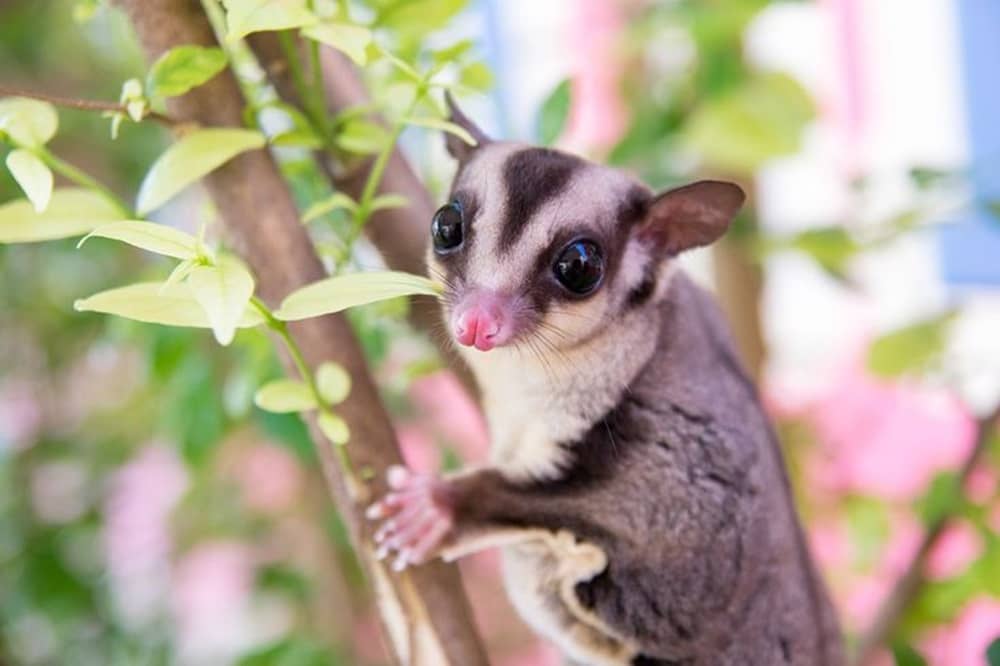
True Platinum Mosaic (TPM)
It is a mix of mosaics and platinum. The sugar gliders will have mosaic patterns with “true platinum” DNA. They are going to have genes and colorations of pure platinum on their bodies, though they may have colors and patterns that may vary.
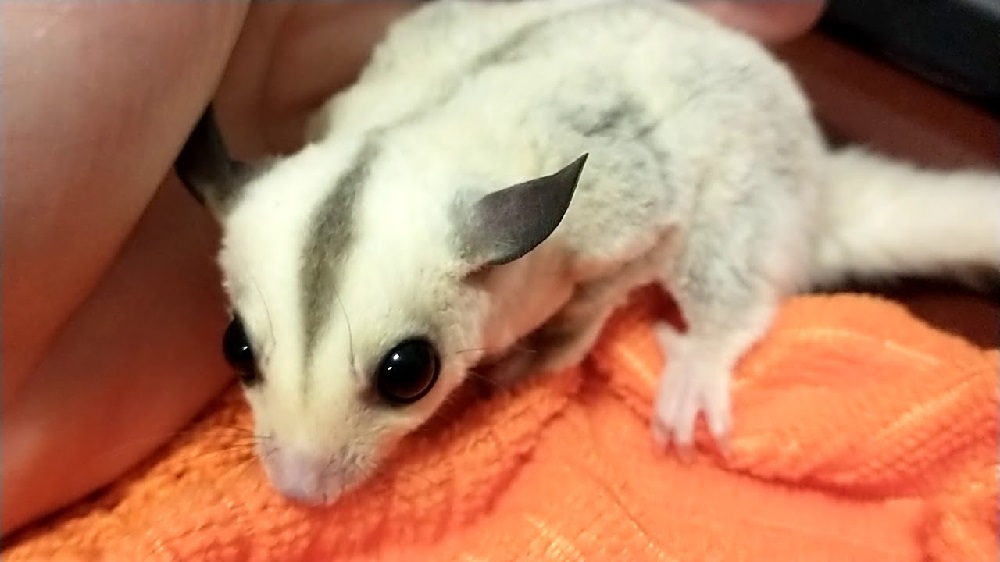
TPMs are generally platinum in color with a unique characteristic that makes them appear mosaic. While it does bear distinct markings, similar to those of a standard Mosaic sugar glider, its underlying coloring is Platinum instead of Standard. Common variations of TPMs are white collars on the back of the neck, ringtails, or whitetails.
Leucistic Sugar Gliders
Leucistic Sugar Gliders are those that have a white coat with no other markings at all; the only extra coloration is the dark eyes. They do not share the exact characteristics of albinos in having red or pink eyes. They are called Black Eyed White, or BEW.
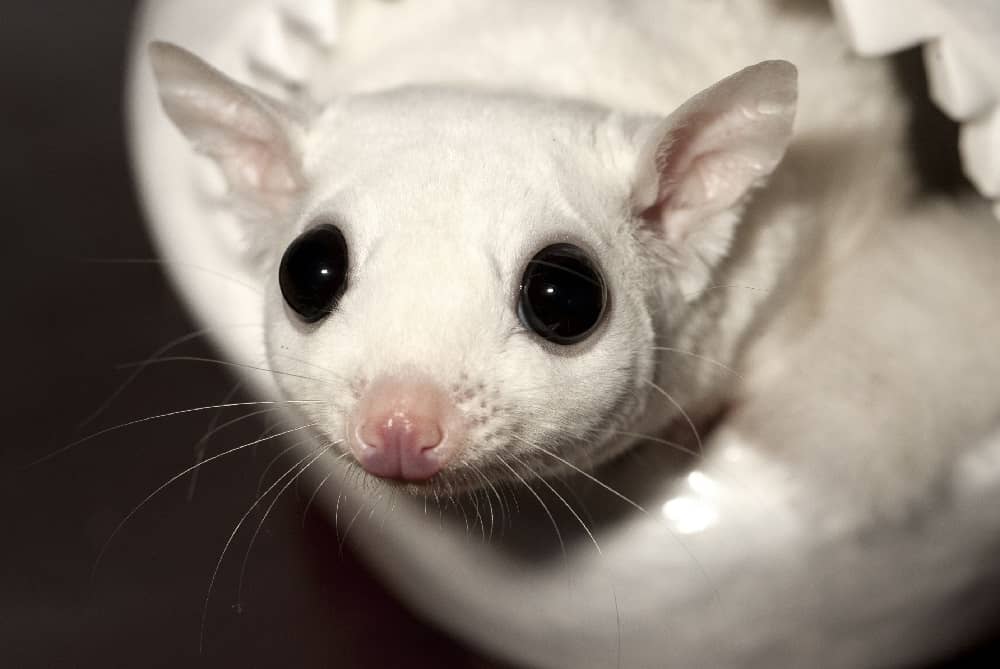
Leucistic sugar gliders have black eyes, and they are white. They are sometimes mistaken for white mosaics. The water lines around the eyes in leucistics are usually pink, and for the white mosaics, they turn gray or even black. With old age, white mosaics may also get shadowing or a few dark hairs. There will always be a pure white leucistic.
White Faced Blonde
The term “White Faced Blonde” describes a sugar glider without the black strip normally visible under its ears. They appear to have “white faces” due to this. Among sugar gliders, the white-faced blonde is the second most popular coat color worldwide.
A white-faced blonde crossed with a classic-colored sugar glider will produce white-faced blondes and classic-colored sugar gliders.

The same color characteristic is also displayed by other colored gliders such as a Cremeino with a white face, a Platinum with a white face, a Mosaic with a white face, etc. This will show that the dark streak below the earlobes is absent on all of them. The WFB can also come in genetically different color types.
Creamino
Creamino got its name due to its cream coloration with albino traits. Their coats are not completely white; however, they have albino-like red eyes. It is creamy colored or off-white with light beige markings instead of black markings like a typical grey. This color is caused due to the combination of leucistic and albino genes. Creaminos were often characterized as gentle and sweet-natured.
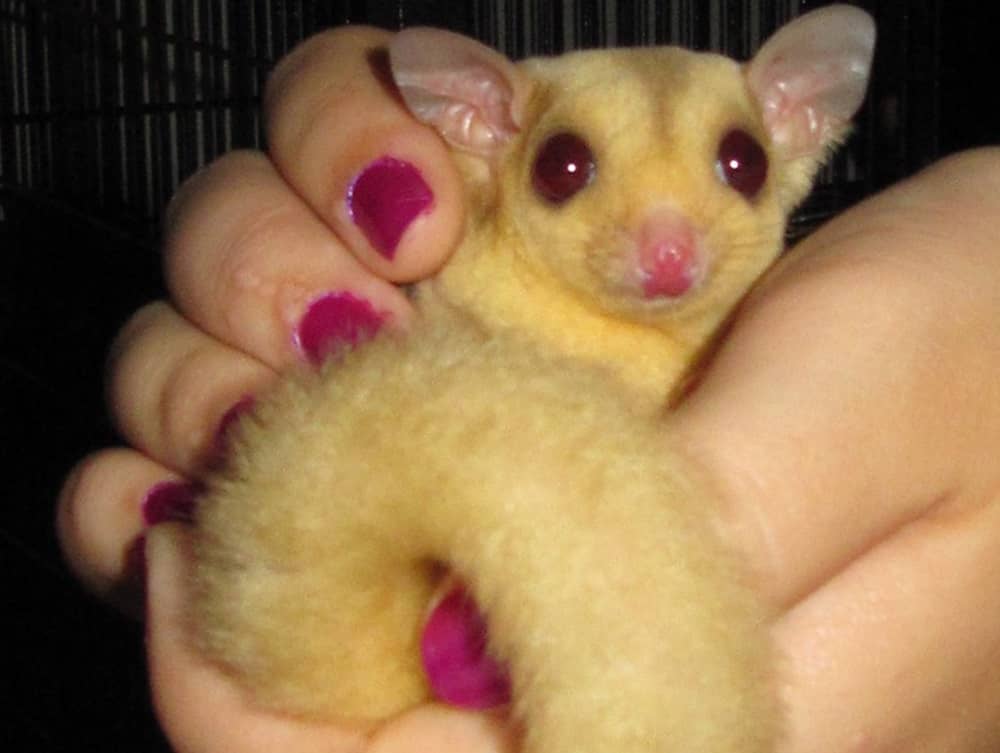
Platinum
These sugar gliders mainly exhibit two color traits. Their fur color is of silver with slightly dark coloration markings of either Red Platinum or Dark Platinum. Sugar gliders that express the Leucistic gene can produce platinum sugar gliders. One more point of interest in these sugar gliders is their white feet.

White Tip
These sugar gliders are mostly gray in color pattern all over their bodies. They have a tail with white tips. This tip of white can be as short as an inch or as long as half the length of the tail. White-tip sugar gliders are hard to breed since they carry a recessive gene.

Melanistic
They don’t commonly have a dorsal stripe, with a darker color on their fur. The color is from a line breeding of two black beauties with black faces.
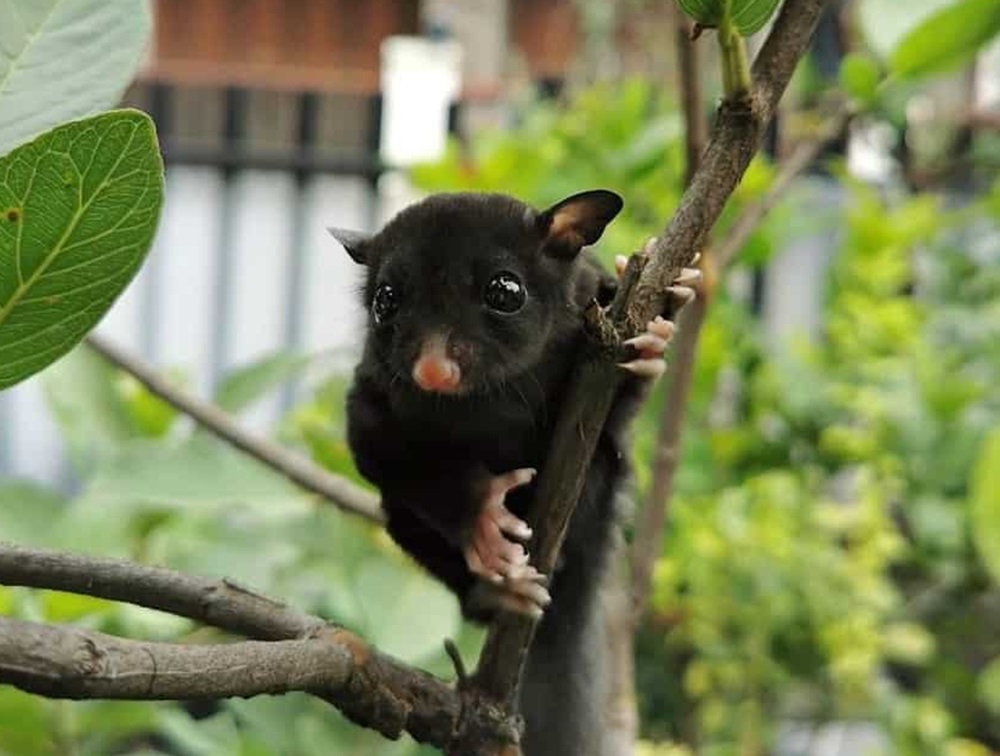
The opposite of albino gliders is melanistic sugar gliders. They have dark pigment applied to the skin and the fur. All parts of the animal contain too much melanin. Nevertheless, some breeders argue that melanistic gliders do not exist and call them a subspecies of black beauty gliders.
Ruby Leu or Double Resistive Sugar Glider
The Ruby leu gliders have a combination of two types of recessive color patterns. They look more like albino gliders since they happen to have pure white fur and red eyes.
The Ruby Leus possess the Cremeino’s red eyes, along with a white coat like that of the Leucistic.
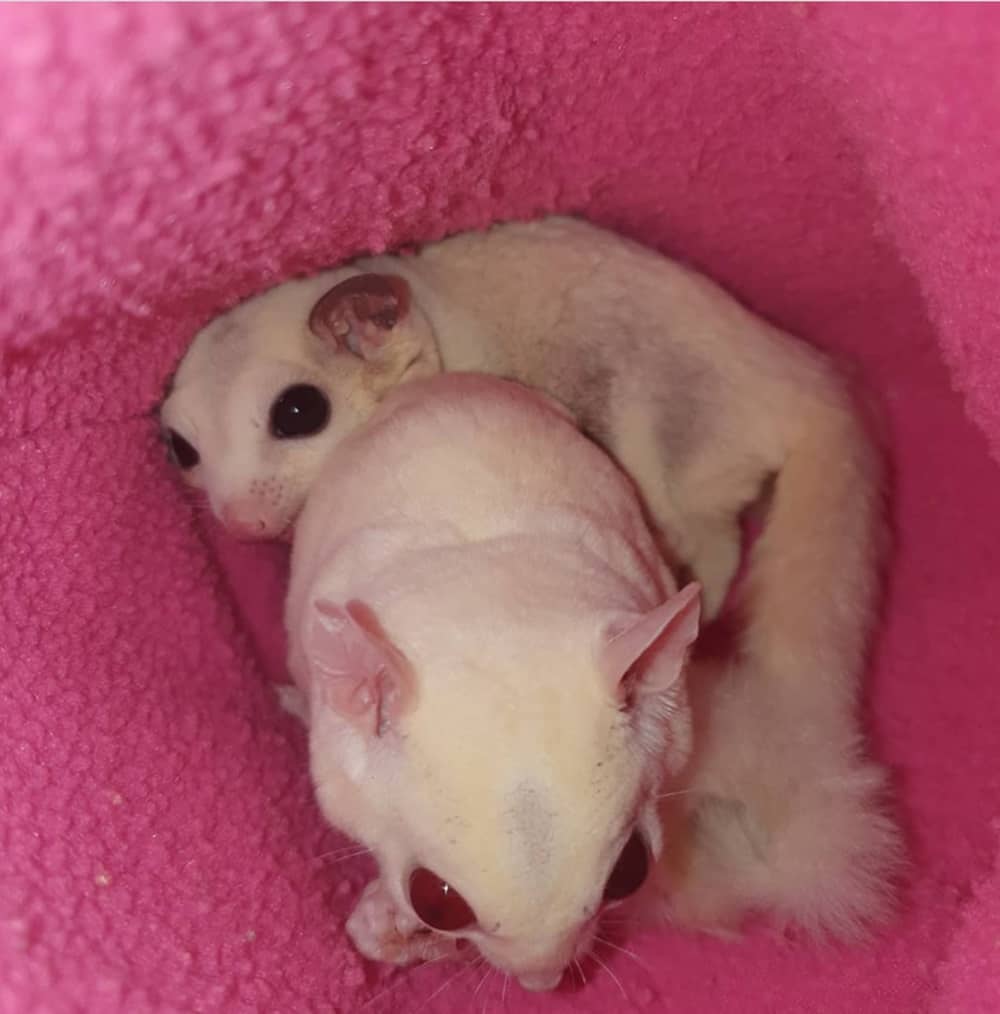
This color can come about in huge, various combinations, although the Ruby Leu can be a bit tricky to breed. These might include a creamino and albino, an albino and leucistic, a creamino and platinum, and even an albino and platinum.
Albino : The Rarest Sugar Glider Color
Albino sugar gliders have beautiful red eyes, and their skin and fur have no pigment. Some are born with a little pigmentation that may form a triangle on their head or barely obscure a stripe down their back. It is very often a light golden color.
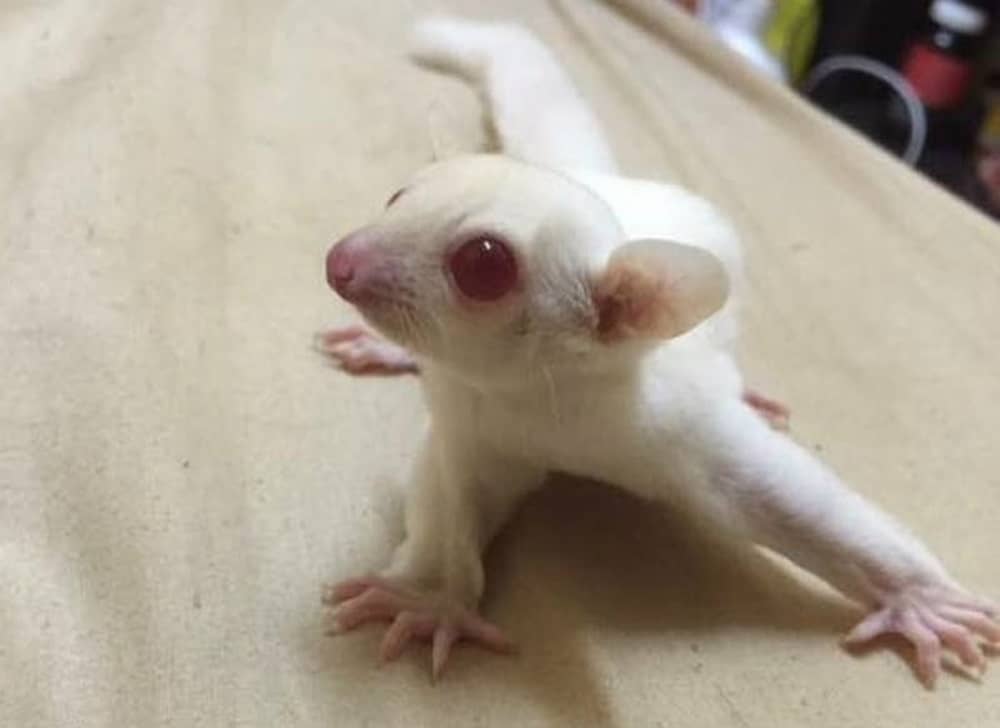
Since it is such a recessive gene, albino gliders can only breed with another albino and hence it is the rarest breed.
Caramel
The caramel glider would have a cream-colored face and caramel-colored fur on its body with white hands, but they may also come in varying shades of grey.
In reality, caramel sugar gliders are just a standard grey color, common in their subspecies. They seem to have white hands and feet, with more of a champagne color than true caramel.
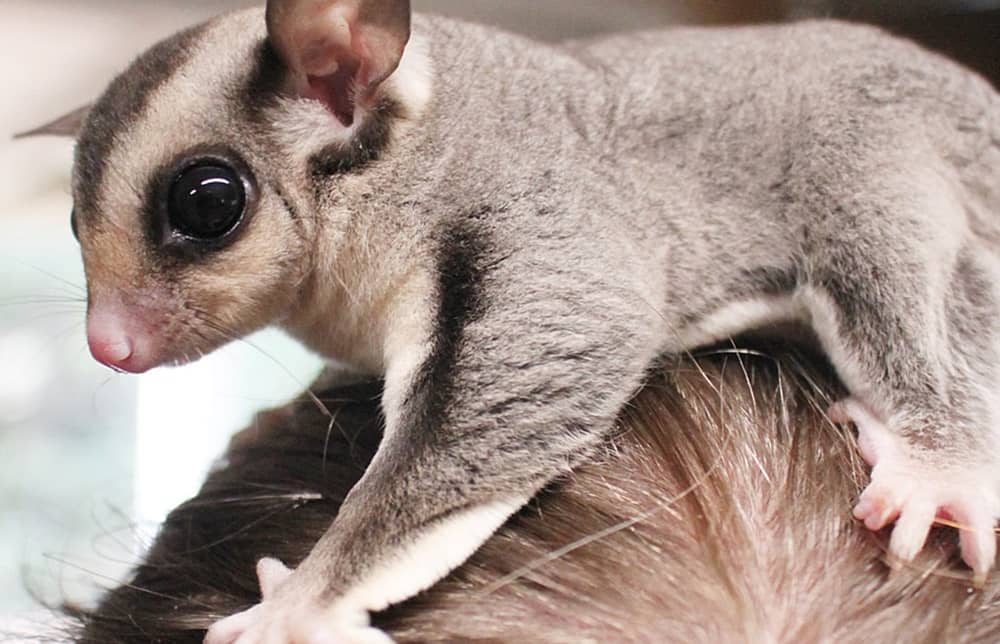
Wild-captured animals imported from the wild have a more caramel color due to the natural foods consumed. They make some other-pitch sound vocalizations. They are larger in stature compared with other subspecies of gliders, and their tails are very thick.
They belong to a specific subspecies and they are only found in parts of Indonesia.
Black Face Black Beauty
One of the identifying features of the blackface gliders is that they do not have full eye rings around their eyes. They can often look “angry” because of this. Blackface gliders do not have to be dark; however they are often darker than their gray or standard mosaic counterparts, and they can become even darker with age.
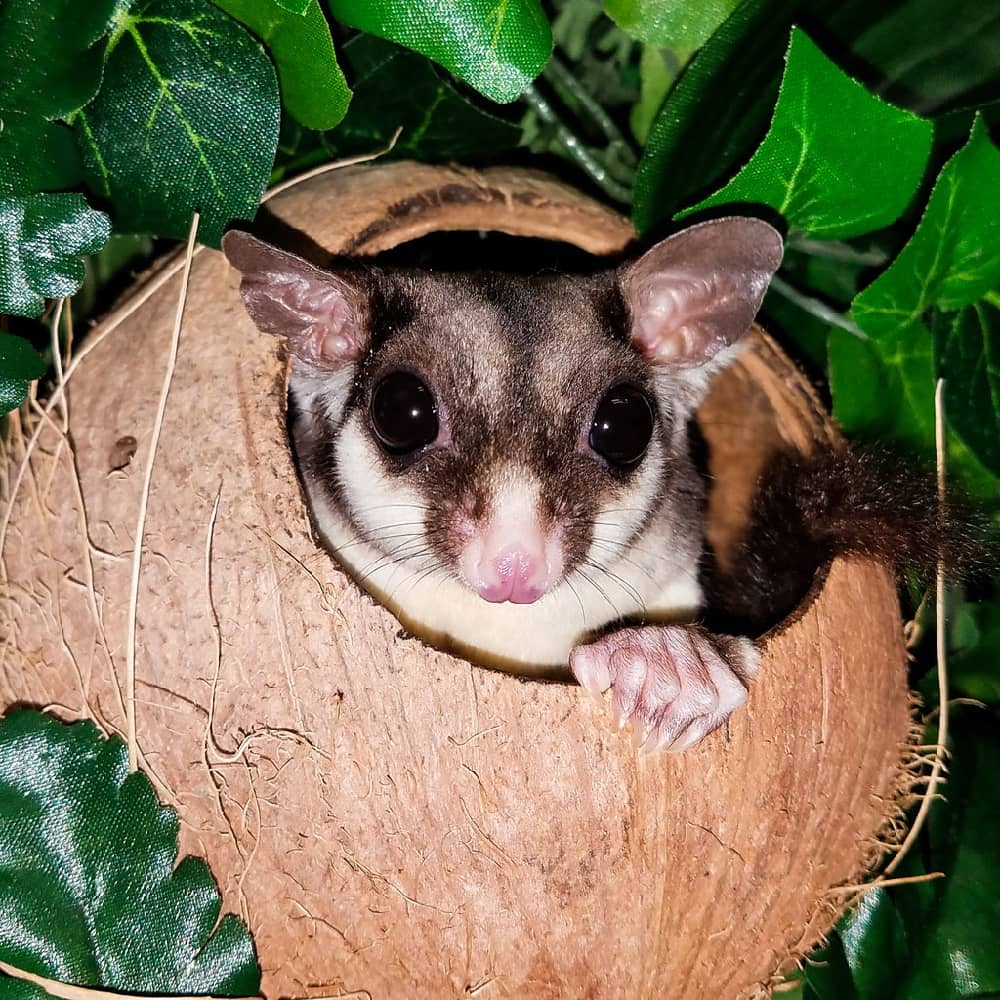
They could be different tones of gray. Blackface gliders can also have different hues, such as platinum or Carmino, with this characteristic. In mosaics where the majority of the faces are white, it can occasionally be challenging to distinguish black faces.
Frequently Asked Questions:
Question 1. What colors are the most common variations of a sugar glider?
Answer: The most common color variation is probably the classic or standard gray sugar glider, which is gray with a black dorsal stripe and white underbelly.
Question 2. What is a mosaic sugar glider?
Answer: A mosaic sugar glider will have a mix of colors and patterns. They can have patches of white, gray, black, or even other colors; no two mosaics are ever alike. Their patterns can be very unique and diverse.
Question 3. Are different colors and patterns more expensive than standard gray sugar gliders?
Answer: The ones with different color phases, like leucistic, albino, mosaic, and others, are always more expensive than the typical gray sugar glider.
Question 4. Do sugar gliders of different colors have special care?
Answer: Regardless of what the color or pattern of a sugar glider is, they all need the same type of care they deserve in the form of a balanced diet, good housing conditions, and regular social interaction. Although an albino sugar glider may be more sensitive to the light because of lack of pigmentation, behaviorally it would be like other albinos.
Question 5: Do Sugar gliders change color with age?
Answer: Essentially, there is color consistency with sugar gliders throughout their lifespan. However, there are cases where their color slightly alters or fades with time. Also, their vibrant coat may become dull due to diet, health, and sunlight exposure.
Question 6: Does the life expectancy of Sugar gliders depend on their color or pattern?
Answer: No, their life expectancy depends on proper care, diet, and nutrition and not on their color or pattern.
Conclusion:
Color and structure variations also make Sugar Gliders very interesting. Each one of them is uniquely beautiful and a feast for the eyes. That is what makes owning Sugar Gliders even more individualistic, rewarding, and unique—whether you like the classic look of a Standard Gray or maybe a Mosaic or Platinum. These sugar gliders can be purchased from an authentic exotic pet website or an ethical breeder by asking for the particular traits you are looking for.
It is, however, important to keep in mind that all Sugar Gliders, regardless of color or pattern, require the same levels of care, attention, and commitment. Choosing a Sugar Glider based on personality and your capability to meet its needs is always more important than appearance.

